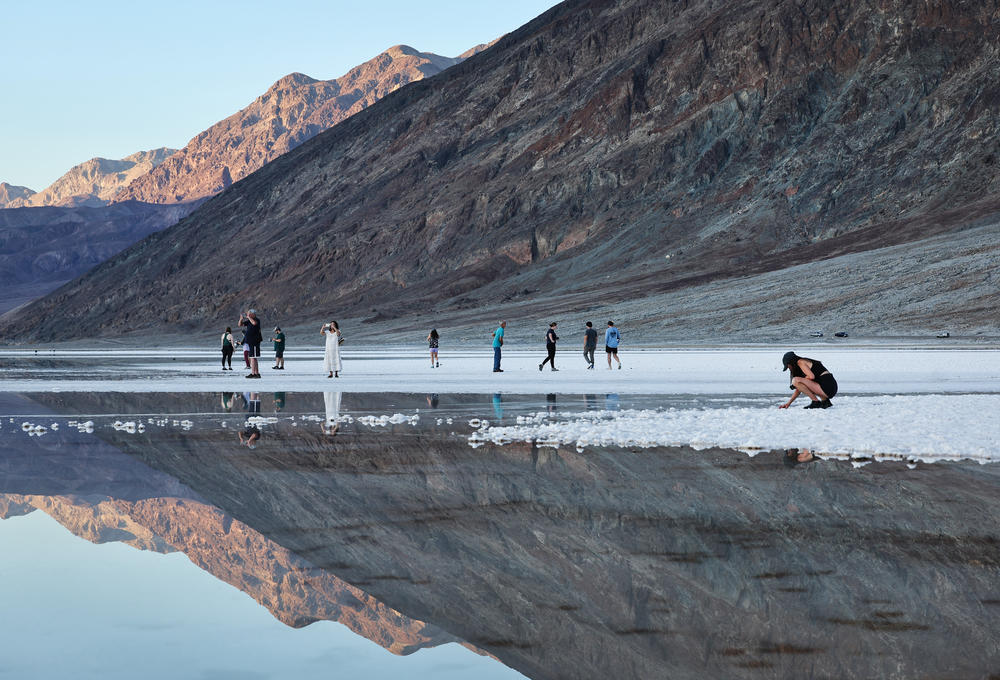Section Branding
Header Content
A stunning — but fleeting — lake has formed in California's Death Valley
Primary Content
When the driest place in North America and one of the hottest places on Earth becomes a desert oasis complete with a lake, it's impossible not to take note.
What is it? A huge, salty lake is currently sitting in Badwater Basin in the middle of California's Death Valley National Park.
- The lake is currently two miles wide and four miles long, though it's only a few inches deep, according to park officials.
- It formed after the remnants of Hurricane Hilary dumped more than two inches of rain on Death Valley in just 24 hours.
- Badwater Basin is the lowest point in North America (282 ft below sea level) and home to vast salt flats left behind from an ancient lake.
- Where there's water, there's usually vegetation: scattered blooms of orange and yellow wildflowers have popped up, and the landscape looks a little more green than normal.
What's the big deal? It's pretty unusual to see a literal lake in Death Valley (it's not called Death Valley for nothing, after all), and the sight is fleeting.
- All the water from Hurricane Hilary damaged 1,400 miles of Death Valley's roads — the park was closed for nearly two months.
- Some stretches of road have since reopened, affording lucky visitors a sight to behold.
- The lake is slowly shrinking as the water evaporates, so it could be gone by the end of this month.
- In 2022, rain caused a flash flood through the park, damaging roads in the park. Crews were still working to fix that damage when Hilary hit.
What are people saying? Laura Cunningham co-founded the desert conservation group Basin and Range Watch. She's lived near Death Valley for decades, so when the park partially reopened to visitors, she went to see it for herself.
- "This area is pretty stark, and so when you see a lake in it, you know, it's sort of joyful," she told NPR.
- "It was beautiful. It was like a mirror. There's no wind when I went, and it reflects Telescope Peak. So you have this 11,000 ft mountain reflected in this desert lake. So it's very special."
- "We've had a lot of lakes reappear and it reminds me of a time 10,000 years ago, when we had more rain in the desert during the Ice Age. So it's like the storm reawakened all these ancient geological hydrologic processes that you see remnants of, but it's amazing to actually see the basins full of water and the desert rivers flowing."
- "I've seen some bighorn sheep, and they're just happy. They're grazing on the wildflowers. The springs – and there are a lot of springs in Death Valley – are flowing really nicely. So the rains were kind of a gift."
So, What now?
- Death Valley National Park is now partially reopened, and the National Park Service doesn't know how long the lake will last – "maybe only until mid-November" – so if you want to see this rare sight for yourself, the sooner the better.
- Crews are still working to repair damaged roads, and it's unclear when still-closed areas will reopen.
Learn more:
- Forget beating the heat. These 'heat chasers' seek highest temperatures in Death Valley
- How weather detectives scrutinize would-be world records
Copyright 2023 NPR. To see more, visit https://www.npr.org.


